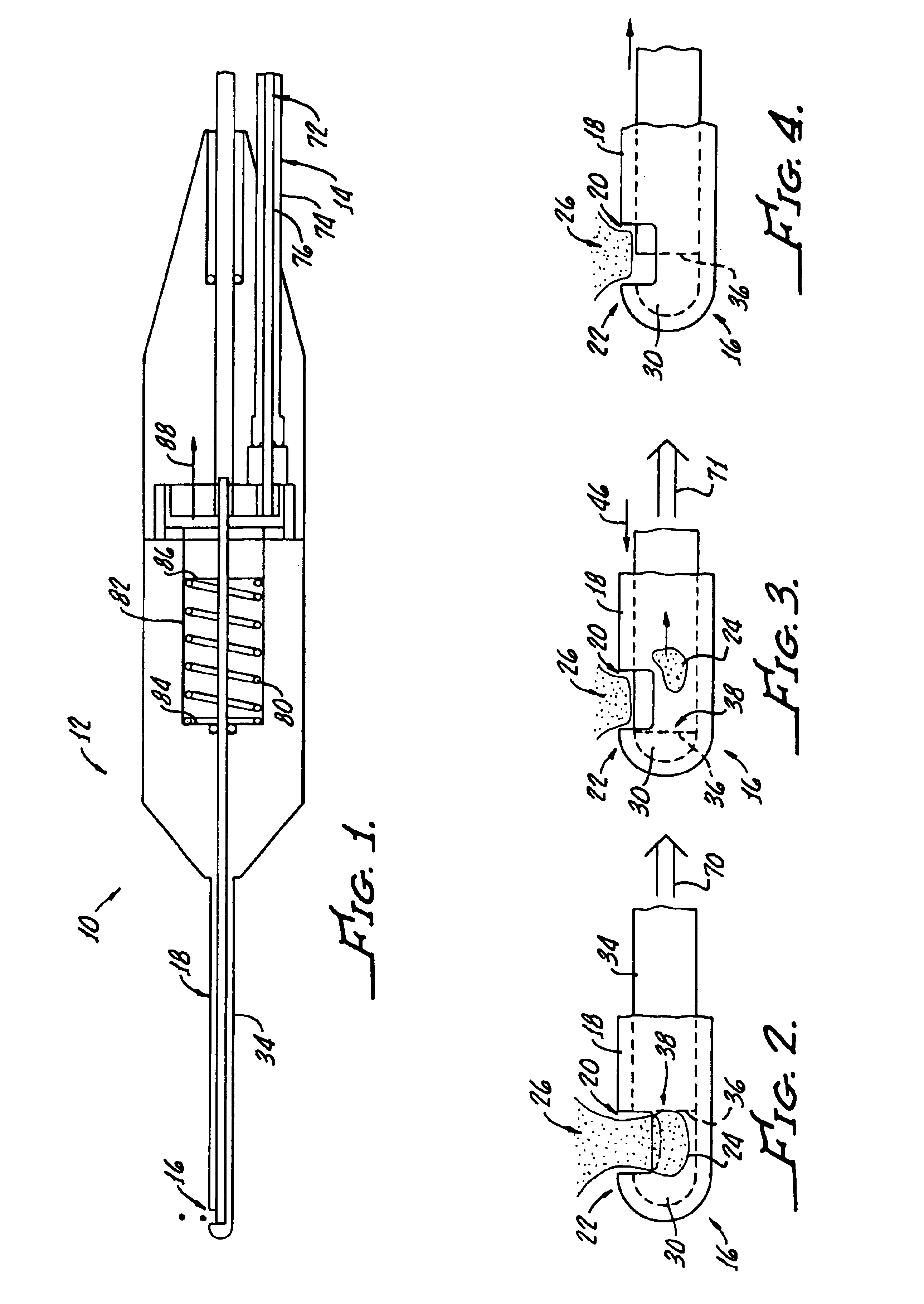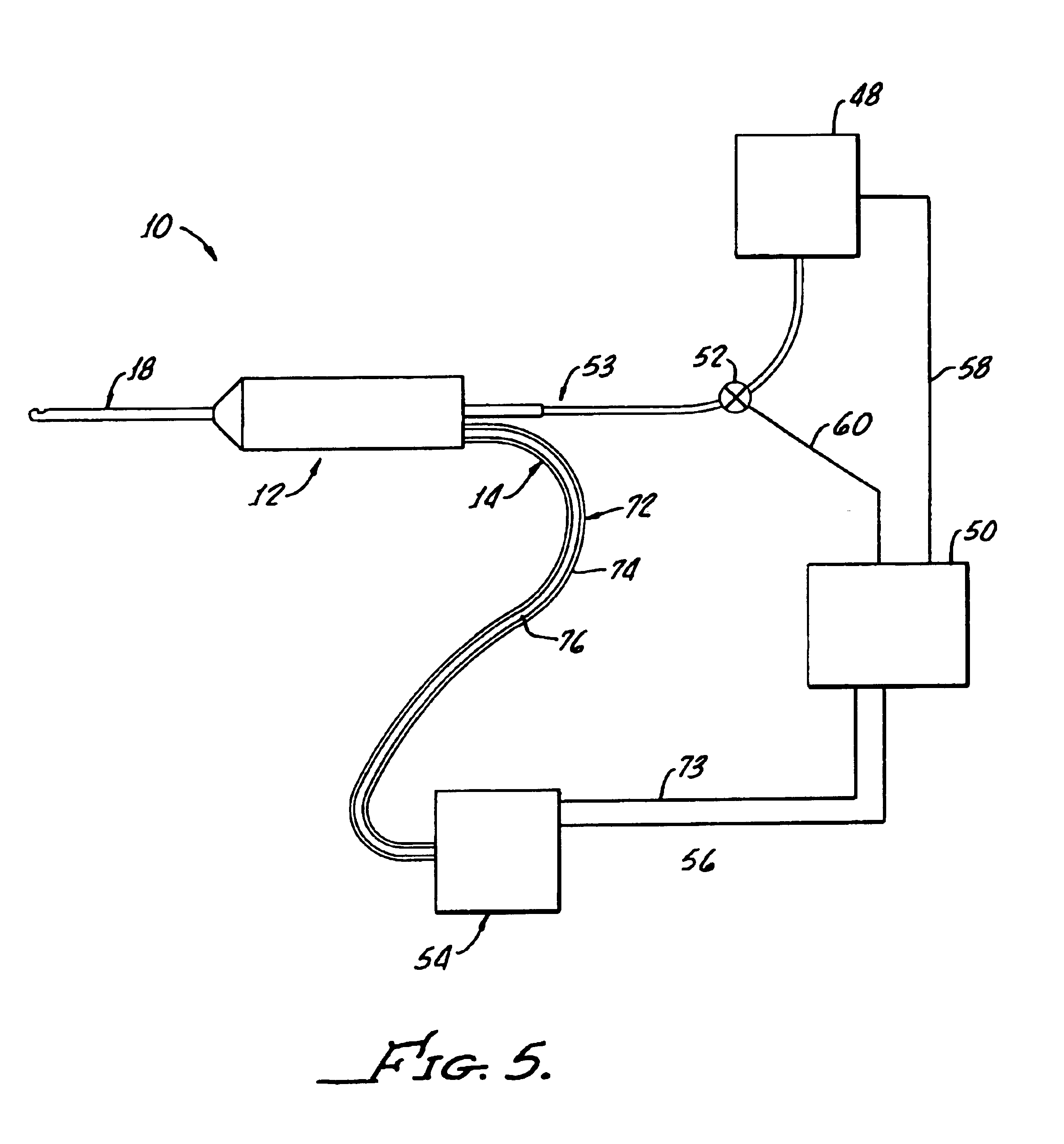Pulsed vacuum and/or flow method and apparatus for tissue removal
a vacuum and flow technology, applied in the field of surgical instruments, can solve the problems of difficult vitreous surgery, pneumatically driven devices that cannot operate effectively at very low speeds, and surgical instruments suitable for vitreous surgery may not be suitable for retinal surgery, etc., and achieve the effect of low cut ra
- Summary
- Abstract
- Description
- Claims
- Application Information
AI Technical Summary
Benefits of technology
Problems solved by technology
Method used
Image
Examples
Embodiment Construction
[0024]Turning now to FIG. 1, there is shown surgical cutting apparatus 10, in accordance with the present invention, which generally includes a probe 12 as means for cutting tissue of a body (not shown in FIG. 1), and a driver 14 for causing the cutting action of the probe 12 as hereinafter described. It should be appreciated that the driver 14 is shown as a mechanical device for illustration purposes, alternate drivers, not shown, such as pneumatic drivers may be utilized.
[0025]More particularly, the probe 12 includes a needle 16 which is shown in detail in FIGS. 2-4. The needle 16 includes an outer sleeve 18 having an opening, or port 20, proximate a distal end 22 of the outer sleeve 18 as means for enabling entry of a portion 24 of tissue to be cut from the body 26 of tissue. The body 26 of tissue may be a vitreous humor of an eye, a retina of the eye, or any other body of tissue located in a confined area of a patient, such as to require the use of a narrow probe to access same....
PUM
 Login to View More
Login to View More Abstract
Description
Claims
Application Information
 Login to View More
Login to View More - R&D
- Intellectual Property
- Life Sciences
- Materials
- Tech Scout
- Unparalleled Data Quality
- Higher Quality Content
- 60% Fewer Hallucinations
Browse by: Latest US Patents, China's latest patents, Technical Efficacy Thesaurus, Application Domain, Technology Topic, Popular Technical Reports.
© 2025 PatSnap. All rights reserved.Legal|Privacy policy|Modern Slavery Act Transparency Statement|Sitemap|About US| Contact US: help@patsnap.com



